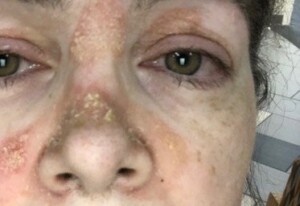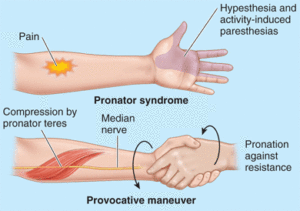Can Gallbladder Removal Cause Chronic Diarrhea? Solution?

Frequent diarrhea can result after gallbladder removal and persist for months.
But there is no clear answer as to how common this problem is, especially the longer the time lapse following the surgery. (more…)
Can a Radical Prostatectomy Make Food Taste Funny?

It’s not unheard of for a man to wonder if the change in the way food tastes is somehow connected to his recent radical prostatectomy.
The patient needs to make sure that this is not just a timeline coincidence. (more…)
Diarrhea After Abdominal CT Scan: Cause, Solution
Do not put off having a CT scan if your doctor wants this done just because you fear getting diarrhea.
The diarrhea after a CT scan happens to many people, a well-documented side effect of the contrast dye.
The Contrast Dye
This is required so that certain structures can be more easily viewed or visualized.
This agent really makes a big difference when compared to non-contrast CT scans.
It works by altering the way X-rays pass through the body, and this allows for clearer and more detailed images for doctors to see.
“For CT, the type of contrast most often given is IV contrast (intravenous),” says Resham Mendi, MD, a renowned expert in the field of medical imaging, and the medical director of Bright Light Medical Imaging.
Common types of contrast agents include iodine based solutions, which are frequently used for their ability to absorb X-rays and improve the contrast of the images.
“Diarrhea would not be a common side effect of IV contrast for CT,” says Dr. Mendi. But it does happen to some people.
“For some CT, oral contrast is given. Mild diarrhea can be a result of the oral contrast, but should resolve relatively quickly.”
Diarrhea is never fun, but looking at the bigger picture, you should think, “Gee, what’s the big deal with some diarrhea when I have something else going on with my body that warrants a CT scan to figure it out?”
If you’ll be having a CT with dye done, you will be given instructions regarding the latest you can eat prior to the procedure, which is typically that you don’t eat anything three hours prior to the scan.
After the scan you can resume eating and drinking as normal.
But if you’re having diarrhea, you’ll want to back off on high fiber foods.
Fiber can increase the bulk and frequency of stools, which might worsen diarrhea.
Instead, focus on low-fiber foods like bananas, white rice and toast, which are gentler on your digestive system and can help firm up your stools.
You should notify your doctor or nurse if the diarrhea persists.
Rather than diarrhea, some people will get constipation following a CT scan — due to the dye.
Drinking plenty of fluids, eating high-fiber foods and staying active can help alleviate constipation.
Discuss these possible outcomes with your medical team if they are worrisome for you.
But really, they should not be concerning other than for the annoyance and inconvenience.
Diarrhea or constipation following an abdominal CT scan are not indicative of the efficacy of the procedure.
Plus, these are transient side effects and should subside with home treatment.
Dr. Mendi has published several articles in radiology journals and has expertise in MRI, women’s imaging, musculoskeletal, neurological and body imaging.
 Lorra Garrick has been covering medical, fitness and cybersecurity topics for many years, having written thousands of articles for print magazines and websites, including as a ghostwriter. She is also a former ACE certified personal trainer.
Lorra Garrick has been covering medical, fitness and cybersecurity topics for many years, having written thousands of articles for print magazines and websites, including as a ghostwriter. She is also a former ACE certified personal trainer.
.
Top image: Shutterstock/best_nj
Source: hopkinsmedicine.org/healthlibrary/test_procedures/gastroenterology/computed_tomography_ct_or_cat
Can Stress Worsen Seborrheic Dermatitis or Even CAUSE It?

Some of your flares of seborrheic dermatitis can be made worse by stress, but stress can actually cause this condition as well. (more…)
Multiple Sclerosis Mimickers: 44 Including Cancer

You may fear you have multiple sclerosis only to learn that it’s actually cancer; there are over 100 mimickers of MS and here are 44 of them. (more…)
How Well Can a CT Scan Detect Pancreatic Cancer?

When pancreatic cancer is suspected, a CT scan is the first imaging study done.
There are three types of CT scan for pancreatic cancer detection.
Pancreatic cancer is one of the most vicious cancers because by the time symptoms start presenting, the disease is in an advanced state – making prognosis very grim.
Furthermore there’s no way to screen for this disease, which takes out about 36,000 Americans every year.
Effectiveness of CT Scan for Pancreatic Cancer Detection
“A CT scan is able to detect pancreatic cancers that are two cm or greater, in about 90 percent of the cases,” says Jordan Winter, MD, a hepato-pancreatic-biliary and oncology surgeon and Chief of the Division of Surgical Oncology at University Hospitals Cleveland Medical Center.
“It is the best available test for assessing pancreatic cancer,” adds Dr. Winter.
“It is best performed with IV contrast to delineate nearby blood vessels.”
But in some cases, non-contrast (minus the chemical dye) CT is used.
The non-contrast is done on people who have compromised kidney function (the dye would injure the kidneys) or who are allergic to the dye.
Using the dye is very important because it enables visualization of the tumor.
A CT scan without the contrast dye will yield poor sensitivity for pancreatic cancer masses.
No contrast material also means poor specificity for these masses.
CT with intravenous (IV) contrast. The dye is used with a multidetector CT (MDCT), which provides high resolution and very thin “slices” or cross-sections of the patient’s abdomen.
MDCT, then, generates good visualization of an adenocarcinoma – good enough to assist with early detection of pancreatic cancer and even staging of the mass (i.e., how progressed it is).
Due to its level of effectiveness, the multidetector CT scan with dye is the imaging study of choice for the preliminary diagnostics of a patient who’s suspicious for pancreatic cancer – unless, of course, they have kidney failure or a history of allergic reaction to the dye.
MDCT sensitivity?
The multidetector CT scan has a sensitivity ranging from 76 to 92 percent for diagnosing pancreatic cancer.
A misdiagnosis can occur due to the visualized mass seemingly blending in with surrounding functional tissue.
MDCT with contrast dye ha an 80-90 percent accuracy rate at assessing infiltration of a malignant tumor as well as whether or not it can be surgically removed.
But it has limitations at identifying any spread to the liver or lymph nodes, though it’s possible it can achieve this.
Again, people with compromised kidney function or a history of allergy to the dye are not suitable candidates for MDCT with dye.
CT angiography. Also known as pancreatic protocol CT, this helps identify staging and whether or not surgery would be an effective option.
This technology involves several sets of CT scans taken over several minutes.
In short, a CT (computerized tomography) scan can show the pancreas pretty clearly and is a trusted modality when pancreatic cancer is suspected.
 In addition to surgical management of pancreatic and related cancers, Dr. Winter treats other upper gastrointestinal malignancies and abdominal tumors. He has authored over 100 peer-reviewed articles, many on pancreatic cancer.
In addition to surgical management of pancreatic and related cancers, Dr. Winter treats other upper gastrointestinal malignancies and abdominal tumors. He has authored over 100 peer-reviewed articles, many on pancreatic cancer.
 Lorra Garrick has been covering medical, fitness and cybersecurity topics for many years, having written thousands of articles for print magazines and websites, including as a ghostwriter. She’s also a former ACE-certified personal trainer.
Lorra Garrick has been covering medical, fitness and cybersecurity topics for many years, having written thousands of articles for print magazines and websites, including as a ghostwriter. She’s also a former ACE-certified personal trainer.
.
Top image: ©Lorra Garrick
Sources
cancer.org/cancer/pancreatic-cancer/detection-diagnosis-staging/how-diagnosed.html
ncbi.nlm.nih.gov/pmc/articles/PMC3397617/
Can Carpal Tunnel Syndrome Cause a Weakened Grip ?

If you’ve been noticing a weaker grip lately, this doesn’t necessarily point to carpal tunnel syndrome, though this condition CAN cause a weakened grip.
In fact, carpal tunnel syndrome can weaken the grip enough to cause difficulty picking up small objects, making a fist or conducting tasks that require a good solid grip.
“CTS can definitely cause a weakened grip because the median nerve innervates the muscles on the thumb side of the hand — and the thumb is extremely important in all grip types,” says Logan Thomas, PT, DPT, based in Muncie, IN.
Dr. Logan adds, “When a nerve is compressed, it decreases the strength of the signal that reaches the muscles.”

Median nerve compression in carpal tunnel syndrome. Scientific Animations
Other Conditions that Can Weaken the Grip
• ALS. Unlike the conditions listed below, this disease will progress to other parts of the body, eventually weakening and paralyzing the entire body.
A grip that’s been weak for months on end, with NO other symptoms, is likely one of the conditions below.
• Pronator syndrome. Think of carpal tunnel syndrome but a little higher up.

Pronator syndrome
• Cervical radiculopathy. The problem originates in the nerves located in the neck, which branch down and ultimately reach the hand.
A “pinched nerve” in the neck can weaken the grip.

Cervical radiculopathy. Mikael Häggström, CC0, via Wikimedia Commons
• Medial epicondylitis (golfer’s elbow). The weakness is not inherent in the hand or wrist; rather, the pain in the elbow prevents full gripping action.

Golfer’s elbow
• Ulnar nerve palsy (e.g., cubital tunnel syndrome). The ulnar nerve is the “funny bone” nerve in the elbow.

Ulnar nerve. BruceBlaus
• Brachial plexus injury/disorder. The brachial plexus nerves that arise in the neck and feed down to the hand can be subject to injury.
• Median nerve palsy. The median nerve runs the length of the arm.
• Radial neuropathy. The radial nerve runs the length of the arm.
There are many nerve conditions aside from the above that can weaken the grip, but they will also affect other parts of the body.
Carpal tunnel syndrome classically also causes pain in the wrist, plus tingling and numbness in the thumb, index and middle finger and part of the ring finger.
 Dr. Thomas a physical therapist, and strength and conditioning coach who is passionate about patient education. He believes the most important and often overlooked step in the process to becoming pain-free is understanding the anatomy and biomechanics of your body.
Dr. Thomas a physical therapist, and strength and conditioning coach who is passionate about patient education. He believes the most important and often overlooked step in the process to becoming pain-free is understanding the anatomy and biomechanics of your body.
 Lorra Garrick has been covering medical, fitness and cybersecurity topics for many years, having written thousands of articles for print magazines and websites, including as a ghostwriter. She’s also a former ACE-certified personal trainer.
Lorra Garrick has been covering medical, fitness and cybersecurity topics for many years, having written thousands of articles for print magazines and websites, including as a ghostwriter. She’s also a former ACE-certified personal trainer.
.
Top image: Shutterstock/ LI Cook
Sources:
medstarwashington.org/our-services/orthopaedics/conditions/hand-and-elbow-conditions/#q={}
ninds.nih.gov/Disorders/Patient-Caregiver-Education/Fact-Sheets/Carpal-Tunnel-Syndrome-Fact-Sheet
healthhype.com/hand-weakness-weak-hand-grip-causes-and-normal-strength.html
Hard Lump Inside Nose: Many Causes Including Cancer

Your suspicion is correct:
A hard lump inside your nose can be cancer — and there are numerous different kinds of cancers that can cause a self-detected lump or bump inside the nose. (more…)
Do Sinus Headaches Always Come with Nasal Mucus?

You may be wondering if a sinus headache is necessarily accompanied by excess mucus from your nose.
Perhaps the absence of mucus has you worrying that your “sinus feeling” headache is actually a brain tumor. (more…)
Can Cancer Cause a Burning Feeling Inside the Nose?

Though a burning feeling inside the nose isn’t all that uncommon, neither is the No. 3 killer of Americans: cancer.
So it stands to reason that one might wonder if cancer can cause a burning feeling in the nose. (more…)







































































